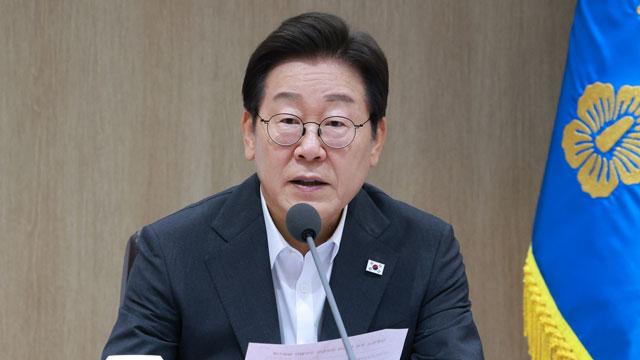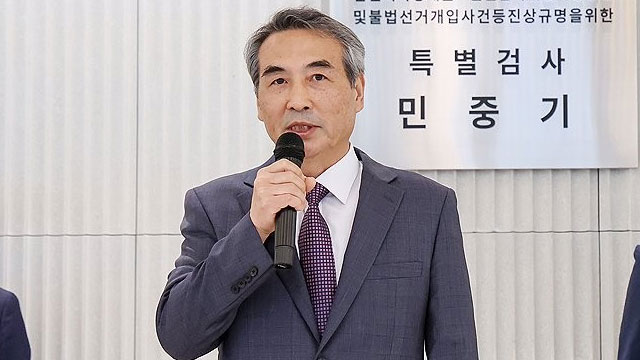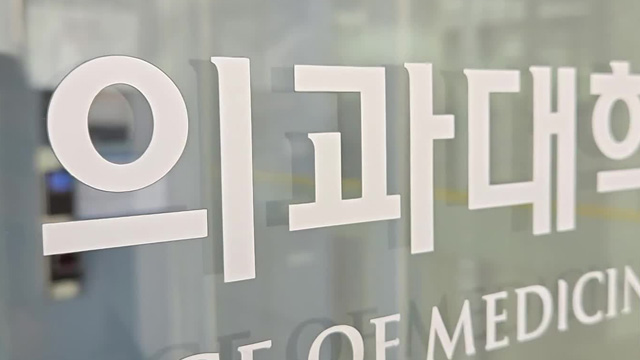“Demographic Cliff”
입력 2018.01.03 (14:57)
수정 2018.01.03 (19:51)
읽어주기 기능은 크롬기반의
브라우저에서만 사용하실 수 있습니다.
[Anchor Lead]
This year will usher in the so-called “demographic cliff” in Korea, meaning the working population between the ages of 15 and 64 will begin to shrink. There is sure to be a shortage of young workers in the mid-to-long term, causing the government to scramble for solutions.
[Pkg]
Last year the number of the babies born in Korea stood at around 360,000, falling below the 400,000-mark for the first time in history. With fewer births and a rapidly aging population, Korea will face the so-called "demographic cliff" which describes a situation where the population of people who are between the ages of 15 and 64 and capable of working declines precipitously. American economist Harry Dent, who first presented this concept, warns that the demographic cliff can cause production and consumption to shrink, and eventually bring about an economic crisis. As a matter of fact, the Ministry of Employment and Labor projects the number of working-age people in Korea will fall by 2.18 million by year 2026. Job shortage and youth unemployment are serious problems now, but in the mid-to-long term, labor shortage is projected to be a new concern for Korea.
[Soundbite] Jeong Gyeong-hoon(Ministry of Employment and Labor) : "In 10 years, demand for new workers is projected to overtake supply, causing a shortage of new workers."
To resolve this issue, the government plans to boost the labor market participation of elderly people over the age of 65 and women. Another major challenge in the era of fewer students is carrying out educational reform to meet each industry's labor demands that changes with technological advances. The government also plans to support job transition and strengthen social safety nets in response to the rapidly changing industry landscape and labor market.
This year will usher in the so-called “demographic cliff” in Korea, meaning the working population between the ages of 15 and 64 will begin to shrink. There is sure to be a shortage of young workers in the mid-to-long term, causing the government to scramble for solutions.
[Pkg]
Last year the number of the babies born in Korea stood at around 360,000, falling below the 400,000-mark for the first time in history. With fewer births and a rapidly aging population, Korea will face the so-called "demographic cliff" which describes a situation where the population of people who are between the ages of 15 and 64 and capable of working declines precipitously. American economist Harry Dent, who first presented this concept, warns that the demographic cliff can cause production and consumption to shrink, and eventually bring about an economic crisis. As a matter of fact, the Ministry of Employment and Labor projects the number of working-age people in Korea will fall by 2.18 million by year 2026. Job shortage and youth unemployment are serious problems now, but in the mid-to-long term, labor shortage is projected to be a new concern for Korea.
[Soundbite] Jeong Gyeong-hoon(Ministry of Employment and Labor) : "In 10 years, demand for new workers is projected to overtake supply, causing a shortage of new workers."
To resolve this issue, the government plans to boost the labor market participation of elderly people over the age of 65 and women. Another major challenge in the era of fewer students is carrying out educational reform to meet each industry's labor demands that changes with technological advances. The government also plans to support job transition and strengthen social safety nets in response to the rapidly changing industry landscape and labor market.
■ 제보하기
▷ 카카오톡 : 'KBS제보' 검색, 채널 추가
▷ 전화 : 02-781-1234, 4444
▷ 이메일 : kbs1234@kbs.co.kr
▷ 유튜브, 네이버, 카카오에서도 KBS뉴스를 구독해주세요!
- “Demographic Cliff”
-
- 입력 2018-01-03 13:55:20
- 수정2018-01-03 19:51:34

[Anchor Lead]
This year will usher in the so-called “demographic cliff” in Korea, meaning the working population between the ages of 15 and 64 will begin to shrink. There is sure to be a shortage of young workers in the mid-to-long term, causing the government to scramble for solutions.
[Pkg]
Last year the number of the babies born in Korea stood at around 360,000, falling below the 400,000-mark for the first time in history. With fewer births and a rapidly aging population, Korea will face the so-called "demographic cliff" which describes a situation where the population of people who are between the ages of 15 and 64 and capable of working declines precipitously. American economist Harry Dent, who first presented this concept, warns that the demographic cliff can cause production and consumption to shrink, and eventually bring about an economic crisis. As a matter of fact, the Ministry of Employment and Labor projects the number of working-age people in Korea will fall by 2.18 million by year 2026. Job shortage and youth unemployment are serious problems now, but in the mid-to-long term, labor shortage is projected to be a new concern for Korea.
[Soundbite] Jeong Gyeong-hoon(Ministry of Employment and Labor) : "In 10 years, demand for new workers is projected to overtake supply, causing a shortage of new workers."
To resolve this issue, the government plans to boost the labor market participation of elderly people over the age of 65 and women. Another major challenge in the era of fewer students is carrying out educational reform to meet each industry's labor demands that changes with technological advances. The government also plans to support job transition and strengthen social safety nets in response to the rapidly changing industry landscape and labor market.
This year will usher in the so-called “demographic cliff” in Korea, meaning the working population between the ages of 15 and 64 will begin to shrink. There is sure to be a shortage of young workers in the mid-to-long term, causing the government to scramble for solutions.
[Pkg]
Last year the number of the babies born in Korea stood at around 360,000, falling below the 400,000-mark for the first time in history. With fewer births and a rapidly aging population, Korea will face the so-called "demographic cliff" which describes a situation where the population of people who are between the ages of 15 and 64 and capable of working declines precipitously. American economist Harry Dent, who first presented this concept, warns that the demographic cliff can cause production and consumption to shrink, and eventually bring about an economic crisis. As a matter of fact, the Ministry of Employment and Labor projects the number of working-age people in Korea will fall by 2.18 million by year 2026. Job shortage and youth unemployment are serious problems now, but in the mid-to-long term, labor shortage is projected to be a new concern for Korea.
[Soundbite] Jeong Gyeong-hoon(Ministry of Employment and Labor) : "In 10 years, demand for new workers is projected to overtake supply, causing a shortage of new workers."
To resolve this issue, the government plans to boost the labor market participation of elderly people over the age of 65 and women. Another major challenge in the era of fewer students is carrying out educational reform to meet each industry's labor demands that changes with technological advances. The government also plans to support job transition and strengthen social safety nets in response to the rapidly changing industry landscape and labor market.
이 기사가 좋으셨다면
-
좋아요
0
-
응원해요
0
-
후속 원해요
0














![[단독] 위성락 실장 “전작권 협상 카드 아냐…카드로 써서도 안 돼”](/data/layer/904/2025/07/20250713_uwNBPL.jpg)


이 기사에 대한 의견을 남겨주세요.